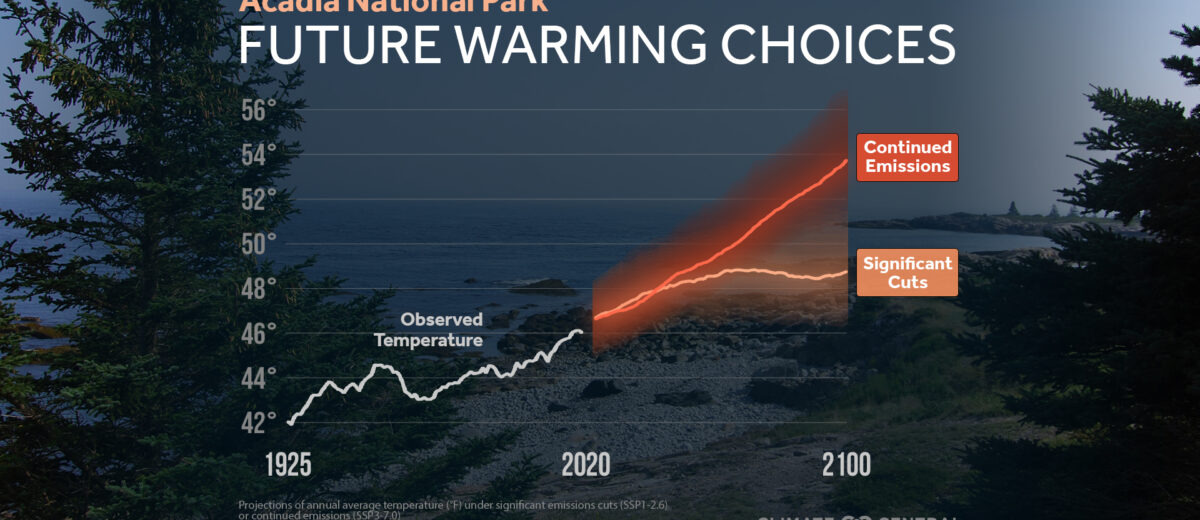As our climate changes, national parks are changing, too. Since the National Park Service was created in 1916, all but one of 62 major national parks have warmed—with most (63%) of these warming by 2 °F or more, according to a Climate Central analysis.
By the year 2100, annual average temperatures across these 62 parks could be 5.5 to 11.0 °F warmer than during recent decades, depending on how quickly we reduce heat-trapping emissions. In Acadia, annual average temperature has increased from 42 to 46 °F. Schoodic Institute President & CEO Nicholas Fisichelli contributed to the Climate Central analysis, which shows that the choices we make now could lead to very different outcomes for parks.
The National Park Service is taking action to address and manage impacts of current and future climate change. In Acadia, this means restoring mountain summits with climate change in mind, protecting Wabanaki cultural sites at risk of erosion from sea level rise, engaging park visitors and local residents to help document this “Landscape of Change,” and working with partners such as Schoodic Institute and Friends of Acadia.
Find media resources and park-specific graphics from Climate Central.
